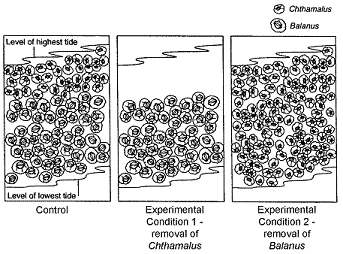A protist is defined as
A. mostly multicellular eukaryotes that obtain food by external digestion.
B. entirely multicellular eukaryotes that obtain food by ingestion.
C. mostly multicellular eukaryotes that obtain food by photosynthesis.
D. mostly unicellular eukaryotes that obtain food by photosynthesis.
E. eukaryotic organisms that are not plants, fungi, nor animals.
Answer: E. eukaryotic organisms that are not plants, fungi, nor animals.
You might also like to view...
According to the competitive exclusion principle, two species cannot continue to occupy the same _____
A) habitat B) niche C) territory D) range E) biome
A sparrow learning the song of its species is considered ________. a. imprinting b. habituation c. None of these choices
d. a fixed action pattern e. instinctive behavior
B cells and T cells are
A. basophils. B. monocytes. C. lymphocytes. D. eosinophils. E. neutrophils.
Experimental Condition 1 of the accompanying figure, the distribution of Balanus suggests: that
 In
In
a. interspecific competition kept Balanus from extending higher into the intertidal area.
b. intraspecific competition kept Balanus from extending higher into the intertidal area.
c. an unfavorable environmental factor kept Balanus from extending higher into the intertidal area.
d. Balanus is less motile than Chthamalus.
e. Balanus is more motile than Chthamalus.